House of Usher - The C64/Atari Game and the Creator
dmx87, June 2024
House of Usher is a platform game published on the Commodore 64 in 1984 and the Atari 400/800 in 1985 by Kingsoft / Anirog.
I admit I never bought this game. I wouldn't know how, or where, at the time. Still, it was a staple of nearly every turbo-tape I loaded on my C64 back in Antiquity. But if I'd had the chance, I'd probably buy it based on the cover alone:

Too hard for me to complete at the time — and still is today, let me add — the atmosphere in this game, to this very day, gives me a satisfying tingle in my vertebrae. The haunting music, the crumbling mansion, as our protagonist hesitates towards the entrance. This, and the overall gameplay weirdness typical of the era makes this a true classic — at least, in retrospect.
It was one of those titles where, whenever you encountered it on a tape, you always typed ”RUN“ just to get a taste of it, perhaps with a glimpse of hope of actually beating some of it's tough, tough challenges.
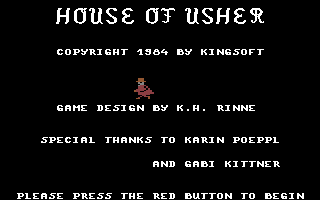
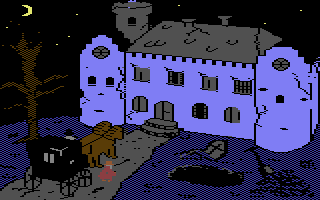
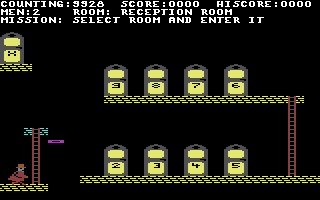
House of Usher faded into obscurity, until ...
Present day
It is the peak of C64 retrogaming, and House of Usher gets a resurrection in the Twitch and Discord C64 community, mostly due to it's challenging gameplay. And in the midst of it - a question is raised, and lingers; who exactly is K.H. Rinne, and what is their story?
And indeed, I'm very pleased to announce that, thanks to the community, I was able to get in touch with Mr. Rinne, and we had a brief and pleasant conversation about his 8-bit history - and beyond.
So, without further ado:
Dr. Karl Rinne

Before House of Usher
—How did you get into computing?
Around 1978, a small circle of friends experimented with very simple TTL digital circuits which was a lot of fun. We knew very little, no theoretical background, just joy of experimentation, collecting components from broken/discarded radios and TVs. Sticking components together, creating simple breadboards and PCBs. Computers were beyond our financial reach until Sinclair's ZX80 came along. It was really cheap, bought as a kit and assembled ourselves, which got us into Z80 programming initially.
A year later I bought the ZX81, again as a kit, it had a few more features. We taught ourselves to program in assembler, and we quickly outgrew the BASIC programming language. I started a job as an electronic technician, my finances improved a little, and I was able to buy myself a dream-machine compared to the old Sinclairs. I went for the Atari 400, because the nicer 800 model was too expensive.
Dark Star
Karl: We now had access to much better assembly tools (Edit6502), and started off learning and programming the 6502. We loved the simplicity of the 6502 and its small and powerful instruction set.
We learnt everything about the Atari's sound and video processing, and quickly became quite proficient. I wrote a few simpler games to improve my hardware insights and software skills, mainly for my own learning and sharing with friends.
One of these games made it's way out in the world, namely Dark Star (1982) - a quite impressive display of technology for it's time:
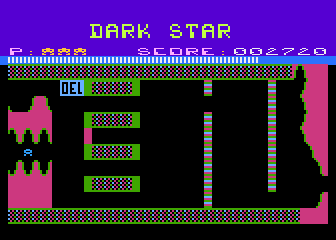
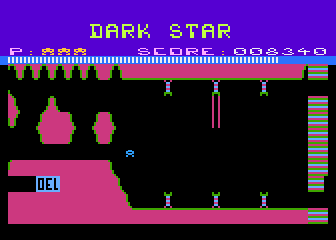
Karl: I wrote games before Dark Star, but can't remember what they were called. Dark Star brought deeper insights into graphics capabilities. Around that time, I could also afford a floppy disk drive, replacing the annoying tapes.
House of Usher
—How did the idea of House of Usher come about?
I came across Miner 2049er and was instantly hooked. To this day, along with Pacman, it's still my favourite game, especially the second part. Miner 2049er was an inspiration to learn about climb and run games.
The game was only very vaguely based on Edgar Allan Poe's work. I was fascinated with mysteries at the time, and read some of Poe's work, but all at a very amateur level.
There was also a very pragmatic reason for the title; the copyrights of Poe had expired, hence no legal issues were expected.
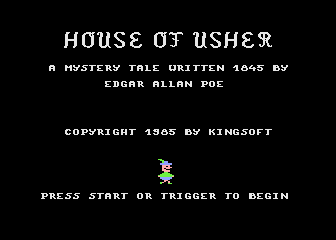
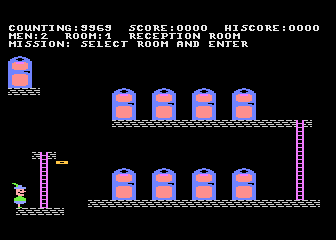
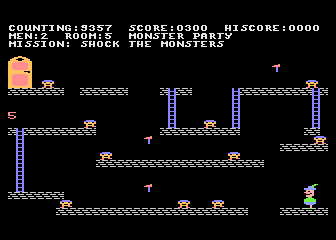
House of Usher for the Atari 400 was developed over a few weeks. The theme music makes me slightly nauseous nowadays - I was a hobby accordionist at the time.
Incidentally, the title music is an adaption of Fliege mit mir in die Heimat by Franz Winkler.
Kingsoft
Kingsoft GmbH was a German distributor of mainly third-party submitted games, founded by programmer Fritz Schäfer. In the UK, many of Kingsoft's titles were distributed by Anirog Software (later Anco) in the UK market.
—Can you recall how you got in contact with Kingsoft?
I can't remember how I got in touch with Kingsoft, but it was their request to port the game to the C64, which I bought. It was a good machine, but I never had the same love for it as I had for the Atari 400. The game is a bit more refined on the C64, though.
—How was the development done?
The C64 version was rewritten in assembly, but I can't remember the exact tool I used. My setup was a bit more advanced at that time, like a 1541 floppy disk drive, which was a big step up from my Atari 400 setup. I remember the disk drive being dead slow. I also remember fitting it with a turbo extension to speed it up.
—What knowledge resources was available?
I don't recall having many C64 books, maybe one or two. Most of the information came from articles published in Germany, and shared between a friend of mine who also developed on the C64.
The Intro Screen

I was curious whether the intro screen was done by Karl himself, or maybe some of the others mentioned on the title screen.
Karl: The intro screen on the C64, which was not present on the Atari version, was not done by myself but rather by Fritz Schäfer, the Kingsoft CEO!
—Strangely, the Atari version says Copyright 1985, while the C64 version says Copyright 1984. How could that be?
The Atari 400 version was ready about a year before the C64 version. The initial C64 version - without title screen, and lacking some minor adjustments of user interface - was ready a few months prior to the version released by Kingsoft.
The mystery deepens:
I believe Kingsoft only published the C64 version.
—So House of Usher was perhaps your only commercial game?
You're right, the C64 version was the only commercial game I did, other than a few very simplistic ZX80/81 games published by the German distributor of Sinclair. A simple game ended up on a ZX80/81 tape distributed in Germany along with the hardware.
—Was there any money in it?
The remuneration from Sinclair was pretty minimal, a 3-figure sum in Deutschmarks I think I remember, but it topped up our small income at the time.
The money received from Kingsoft (an amount of approx. 5000 Deutschmarks, I believe) went straight into funding an Atari ST kit.
After House of Usher
Karl: After the C64, I switched over to the Atari ST, and subsequently IBM-AT compatible computers. My main focus returned to low-level engineering programming and hardware development. I joined Siemens Germany and helped to develop airbag control units, and also took on some 8051-based microcontroller development.
A few years later I started to study electronics, and got a degree in 1989. I remained in the electronics industry until 2001, before switching over to academia.
Close to retirement now!
Passing on knowledge
Karl: The assembly skills gained during my ZX, Atari and C64 times proved to be a great foundation for professional work later. I often feel sorry for my students these days who don't have the same opportunities to learn machines inside out as we did, bitwise-familiar with hardware registers of video and sound controllers.
Time has moved on, I guess, and compute hardware is a million times more complex compared to the simple devices we used. But something important got lost. A deep understanding at the software and hardware interface level.
I try to pass the joy of fundamental electronics development to my students. They all do Verilog HDL projects involving the development of simple video games (like Pong, Snake, etc.) on FPGA platforms.
Most of the students love those mini-projects.
—Do you keep up with retro gaming today?
I haven't played any of those games in a while, but I still have my whole collection of computers (ZX80/ZX81, Atari 400 and also later bought Atari 800 and XL) in the attic. I must take them down, blow the dust off, and turn them on. I did so about 2 years ago, replaced all electrolytic capacitors, they all still work!
The C64 is the only machine I decided not to keep, which I regret now.
The final mystery
Two female names are mentioned in the title screen, Karin Pöppl and Gabi Kittner. I couldn't resist asking who they are!
Karl clarifies, ‘Karin Pöppl was my then girlfriend ;-) I've forgotten about the reference I left. I don't know a Gabi Kittner, could be Fritz's or somebody elses partner.’
. . .
I want to extend my deepest gratitudes to Karl Rinne for being so kind to put his memories into such eloquent writing, and also the C64 community for supporting, researching, playing and re-playing all the classic 8-bit games.
Links
- Dark Star (1982, Atari 400/800) (Atarimania)
- House of Usher manual (C64) (Archive.org)
- House of Usher (1985, Atari 400/800) (Atarimania)
- House of Usher (1984, C64) (Lemon64)
This page will be updated with new information, when possible.
E.g. can we find out which ZX game was bundled with the ZX80/81 in Germany?